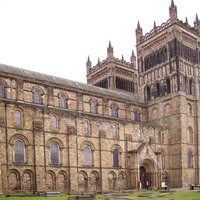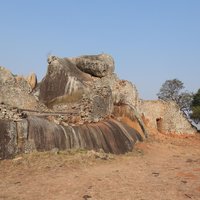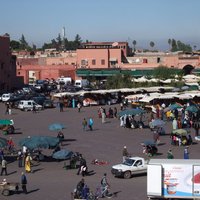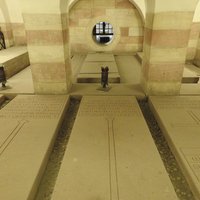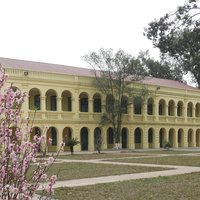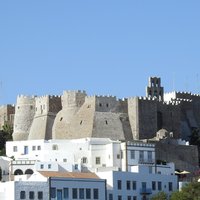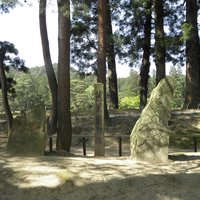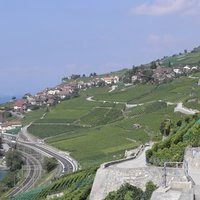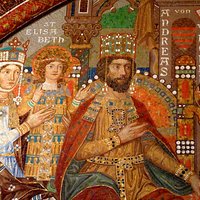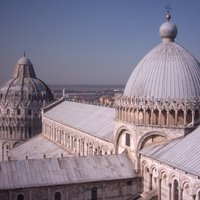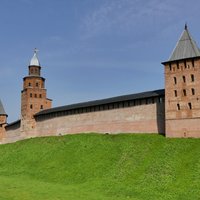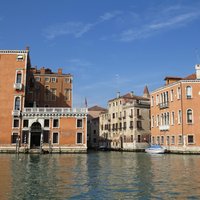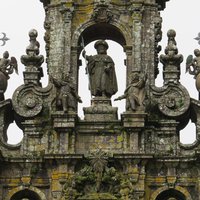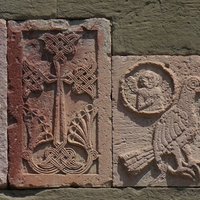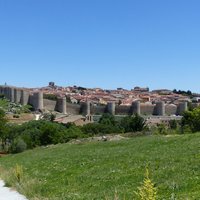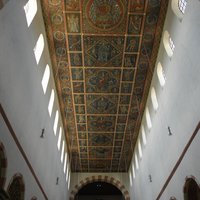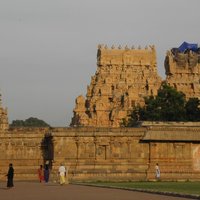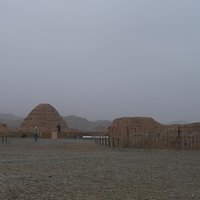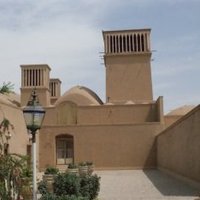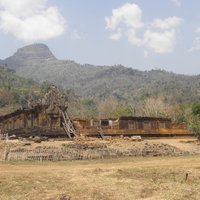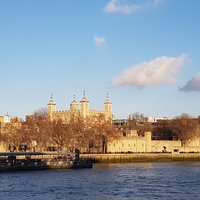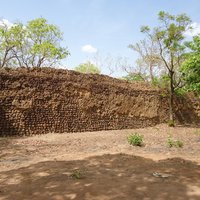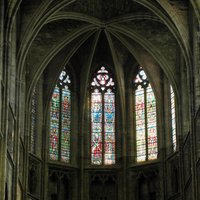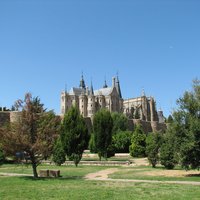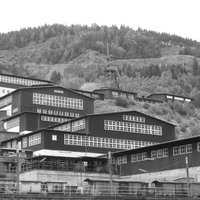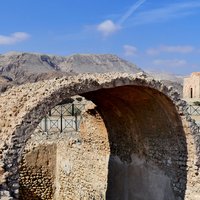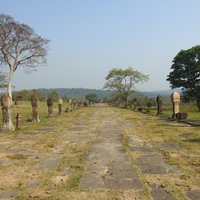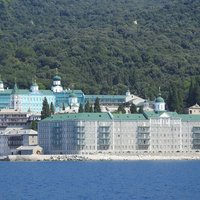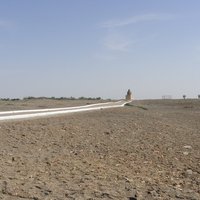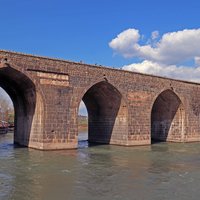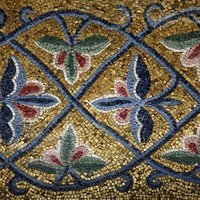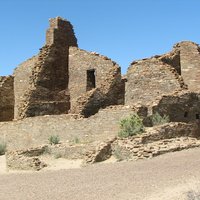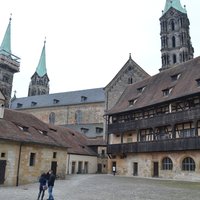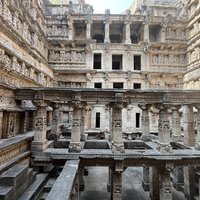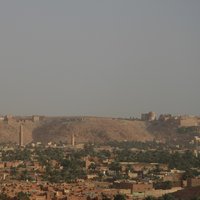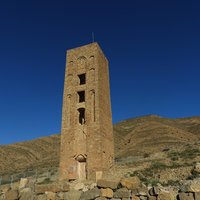Connected Sites
-
The archetypal Norman Cathedral even though it took centuries to reach its current from, therefore 11th Century
-
founded in the 11th Century
-
The settlement at L'Anse aux Meadows has been dated to approximately 1000 years ago, an assessment that agrees with the relative dating of artifact and structure types. This is about the same time as the establishment of Vinland (1003)
-
Founded in 1070-72 by the Almoravids
-
William de Volpiano designed the Abbey in the early 11th Century.
-
constructed 1024-1061
-
Origins from 1010, but most of the current structures are from the 19th century
-
1088
-
-
The present vine terraces date from the 11th century and where developed by Benedictine and Cistercian Monasteries (AB ev)
-
The first steps in its construction were taken in 1067, following the troubles caused by the Investiture Contest, troubles which encouraged the birth of feudalism. The castle is mentioned for the first time in 1080 as a strategic base (AB ev)
-
In the Campo dei Miraculi "the individual, basic structures ..... church, cathedral, baptistry, campanile, cemetery), were erected between the 11th and 14th centuries" (AB) "The power of Pisa as a mighty maritime nation began to grow and reached its apex in the 11th century.... Construction (of the Duomo) was begun in 1064 .... and set the model for the distinctive Pisan Romanesque style of architecture." (Wiki)
-
"veritable "conservatory" of Russian architecture of the Middle Ages and later periods (llth-19th centuries)" (AB ev); St. Sophia Cathedral is from 1045-1050
-
St. Mark's: status as a symbol of Venetian wealth and power, from the 11th century (wiki)
-
the cathedral was constructed 1075-1122
-
Cathedral and Samtavro date from the 11th century, there are also remains of 7th century churches
-
walls built 1090-1099
-
first documented population movement phenomenon dates back to the 11th - 13th centuries (AB ev)
-
The Normans took control over the region in 1092 and the land was subdivided amongst members of the aristocracy, and large tracts of land were also given to monasteries, and the wool trade and the mining industry developed from this period onwards. .... The current settlement pattern began to develop in this period. (AB ev)
-
current abbey was built 1040-1090
-
"The nominated property shows the extraordinary adaptability of a Polynesian society that arrived by sea around the year 1000 CE on one of the most isolated archipelagos of high islands with steep valleys in the world." (AB ev)
-
the cathedral was constructed 1010-1020
-
1006
-
Brihideswara temple in Thanjavur: 1003-1010
-
"The Xixia Imperial Tombs are a necropolis of the Xixia Dynasty, (...) formed from the 11th to 13th centuries." (AB ev)
-
The oldest dated inscription surviving in Yazd today is on the Davazdah-Imam monument (1008-1051)
-
The earliest remains that still can be seen are from the 11th century - major rebuilding was done in the 11th-12th centuries by the rulers of Angkor
-
Straddles many eras but the White tower is its heart and is 11th century
-
"The recent inter-disciplinary project has allowed a reassessment of the history of Loropéni. This has pushed much further back the date of its construction from around the 17th century to at least the 11th century AD" (AB)
-
From the 11th-13th centuries 'staging post' churches developed along the pilgrimage route, and in particular in France.
-
For Santiago's Cathedral and Puente la Reina
-
first documentary mention of Rammelsberg is from the beginning of the 11th century. The rich deposits of silver ore there were one of the main reasons for siting an Imperial residence at the foot of the Rammelsberg mountain by the Emperor Henry II; he held his first Imperial Assembly there in 1009 (AB ev)
-
flourished in the 11th to 15th centuries CE (AB ev), though its origins are much earlier ("The earliest historic evidence in the ancient city of Qalhat is an Iron Age tomb dating to around 500 BC")
-
In the first half, during the King Suryavarman I (1002-50)
-
In 1054, the sacred mountain of Athos, a holy place in the Christian world, became the principal spiritual home of the Orthodox church. (AB ev)
-
Construction of the Cathedral started in ca. 1037, "It is one of the major edifices of Eastern Christianity in the 11th century" and "the stylistic features of its decoration were spread throughout Kievan Russia in the 11th century by the icon painters working in Kiev." (AB ev)
-
Kutlug-Timur minaret dates from the 11th century
-
by the 11th century, the form of Fujisan came to inspire literature and art - notably on painted paper screens (AB ev)
-
Oldest towers and inscriptions in the city walls date from 1085-1093
-
Hosios Loukas (1011 or 1042), Nea Moni (1045)
-
The zenith of this culture was from 1020 to 1100
-
The historical period of greatest relevance in this nomination is the Bagan period (11th – 13th centuries) (AB ev)
-
exerted a strong influence on urban form and evolution in the lands of central Europe from the 11th century onwards (AB ev)
-
built as a memorial in the 11th century CE (Nom File)
-
the standing sites originate from the early 11th Century
-
founded 1007

